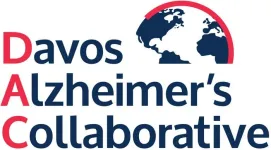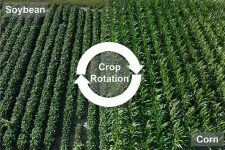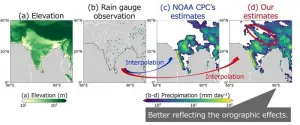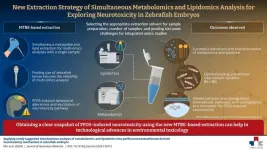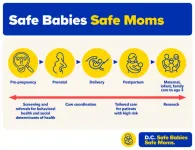By Benjamin Boettner
(BOSTON) — Currently, no anesthetic compound or cocktail can be used safely outside of a hospital facility. This is because current drugs impair the brain and central nervous system’s ability to regulate a number of vital processes, including respiration, body temperature, and heart rate in addition to creating a state of unconsciousness or sedation, making the strict monitoring of patients with the help of sophisticated instruments and highly-trained clinical personnel an absolute necessity. To reduce trauma associated with injuries and improve combat casualty outcomes, under a new DARPA-ABC contract of up to $18.8M over 3 years, a highly multi-disciplinary team led by researchers from the Wyss Institute at Harvard University aims to tackle the neuronal basis of anesthesia in more depth and create a new class of drugs that can be safely administered to induce an anesthesia-like state in injured people outside of hospitals without compromising their vital functions. The team’s highly-complementary approach is enabled by the world-leading expertise of its collaborators at the Wyss Institute, Harvard’s Department of Molecular and Cellular Biology (MCB), MIT, and Tufts University.
Developed with the support from Defense Advanced Research Projects Agency (DARPA)’s “Anesthetics for Battlefield Care” (ABC) program, safe battlefield-ready anesthetics could also help save the lives of people threatened by various types of accidents and natural disasters, and as non-opioid pain treatments help fight the opioid addiction epidemic.
Solving an ostensibly impossible challenge
“To tackle this ostensibly impossible challenge, we assembled an exceptional team of highly-complementary researchers that is taking a multi-pronged approach to understanding the neuronal basis of anesthetics down to the level of novel molecular targets,” said Wyss Institute Founding Director Donald Ingber, M.D., Ph.D. who is the Lead-PI on the project. “In the project, we will also leverage Biostasis compounds that we discovered under our past DARPA-supported Biostasis project whose promising effects on slowing metabolism of whole organisms and isolated organs show striking anesthetic features.” Ingber is also the Judah Folkman Professor of Vascular Biology at Harvard Medical School and Boston Children’s Hospital, and the Hansjörg Wyss Professor of Biologically Inspired Engineering at the John A. Paulson School of Engineering and Applied Sciences (SEAS).
The Wyss Institute’s ambitious Biostasis project’s goal was to develop the ability to chemically induce a state of “suspended animation” to help civilians and soldiers with life-threatening traumas buy time until more targeted interventions become available. To achieve this goal, the team identified strategies that could rapidly and reversibly slow down central metabolic processes in the body without actively lowering its temperature. Leveraging a combination of computational molecular discovery tools, behavioral and cognitive screening assays in small animal models, like the Wyss’ CogniXense platform, as well as advanced human Organ Chip in vitro models, the project successfully produced a series of Biostasis compounds. For the development of their small animal screening assays, which use the behavior of tadpoles from Xenopus laevis frogs as a read-out for rapid drug screening and repurposing, Ingber’s team worked closely with the team of Wyss Associate Faculty member Michael Levin, Ph.D. Levin, who also is a Distinguished Professor in the Biology Department of Tufts University, and Director of the Allen Discovery Center at Tufts. Levin is a Co-Investigator also on the new DARPA-ABC project.
Among the Biostasis project’s multiple advances, the team, for example, repurposed drugs as Biostasis compounds that were traditionally used to treat Alzheimer’s disease or pain by demonstrating that they were able to preserve cell and organ viability by slowing biochemical and metabolic activities. Xenopus tadpoles treated with these Biostasis compounds displayed significantly reduced metabolism and mobility, and were largely irresponsive to sensory stimuli, mimicking the state of ‘suspended animation’ in hibernating animals. Importantly, the team found that upon removal of the drugs, the animals could reanimate themselves: their significantly reduced heart rate fully and rapidly recovered by itself. In the DARPA-ABC project, the team now set out to test the hypothesis that select Biostasis compounds could be a new class of drugs to induce an anesthesia-like state as well as treat pain.
“Effective anesthesia, in addition to maintaining stable vital signs, needs to fulfill multiple requirements in that recipients should be unconscious, immobile, and not feel any pain, and of course all of these features must be reversible,” said Haleh Fotowat, Ph.D., a Senior Scientist at the Wyss who played a key role in developing the research proposal and forming the multi-institutional team. Fotowat is the Wyss team’s lead neuroscientist on the project and helps manage the overall program. “We identified Biostasis compounds that so far can reversibly induce immobility and unconsciousness, and are in the process of testing them for the other key requirements. The grand challenge is to enable the body to continuously control its autonomic nervous system, which regulates many involuntary physiological processes, such as heart rate, blood pressure, and respiration. This is the only way anesthetics could be used outside of the hospital setting.”
The power of collaboration
To create new entry points into this challenge, the Wyss team is collaborating with Co-Investigator Florian Engert, Ph.D., a Professor at Harvard’s MCB Department, with whom Fotowat worked as a postdoctoral fellow before joining the Wyss. Engert’s group leverages zebrafish as an experimental model system, which share much of the human brain’s basic anatomy and many neurological functions. The transparency of zebrafish larvae will allow the researchers to microscopically quantify neural activity at cellular resolution, and thus to map the neuronal circuits that are activated by Biostasis compounds and common anesthetics both, in the brain and autonomic nervous system. Adding to their usefulness in the DARPA-ABC project, zebrafish share 70% of human genes, can be genetically modified with ease, and lend themselves to high-throughput investigations.
Brain regions, neuronal circuits, and molecular pathways that mediate anesthesia are also the research focus of three groups at the MIT that joined the Wyss’ DARPA-ABC project. Emery Brown, M.D., Ph.D., a Subaward PI, is the Edward Hood Taplin Professor of Medical Engineering and Computational Neuroscience in MIT’s Department of Brain and Cognitive Sciences, and one of the world’s leading experts on the neurophysiological mechanisms of anesthetics. Mriganka Sur, Ph.D., Newton Professor of Neuroscience and Director of the Simons Center for the Social Brain at MIT studies the organization, plasticity and dynamics of the cerebral cortex, a region of the brain that is involved in many aspects of anesthesia. Finally, Fan Wang, Ph.D., a Professor in Brain and Cognitive Sciences and Co-Director of K. Lisa Yang and Hock E. Tan Center for Molecular Therapeutics at MIT, who also is a Co-Investigator on the project, is uncovering the neuronal circuits that govern the interactions between brain and body, including those controlling movement, pain, and addiction. Her lab, for example, has discovered that a subset of neurons in a brain region known as the central amygdala, which is known to function in the processing of pain, is activated by general anesthesia.
In parallel to the DARPA-ABC project’s top-down approach of defining the neurological underpinnings of Biostasis drugs, the three MIT groups are taking a complementary bottom-up approach by specifically activating or inhibiting specific neuronal circuits and cell types in mice that have been predicted to control unconsciousness, pain suppression, or muscle relaxation (immobility). Analyzing the molecular signatures identified in the mouse studies could reveal new targets for anesthesia drugs against which new chemical compounds can be developed. The MIT team will also assess the safety and efficacy of newly identified anesthetic compounds, carefully benchmarking them against state-of-the-art anesthetics and quantifying their impact on physiological functions such as heart rate and breathing.
By iterating their process of neuronal circuit mapping using existing compounds, cell and molecular target identification, and the discovery of new compounds, the team aims to home in on the first anesthesia-inducing drugs that could be applied remotely from clinical facilities to help save numerous lives of military service members as well as civilians in hazardous situations.
Media contact
Benjamin Boettner, Ph.D., Wyss Institute, Benjamin.Boettner@wyss.harvard.edu
###
The Wyss Institute for Biologically Inspired Engineering at Harvard University (www.wyss.harvard.edu) is a research and development engine for disruptive innovation powered by biologically-inspired engineering with visionary people at its heart. Our mission is to transform healthcare and the environment by developing ground-breaking technologies that emulate the way Nature builds and accelerate their translation into commercial products through formation of startups and corporate partnerships to bring about positive near-term impact in the world. We accomplish this by breaking down the traditional silos of academia and barriers with industry, enabling our world-leading faculty to collaborate creatively across our focus areas of diagnostics, therapeutics, medtech, and sustainability. Our consortium partners encompass the leading academic institutions and hospitals in the Boston area and throughout the world, including Harvard’s Schools of Medicine, Engineering, Arts & Sciences and Design, Beth Israel Deaconess Medical Center, Brigham and Women’s Hospital, Boston Children’s Hospital, Dana–Farber Cancer Institute, Massachusetts General Hospital, the University of Massachusetts Medical School, Spaulding Rehabilitation Hospital, Boston University, Tufts University, Charité – Universitätsmedizin Berlin, University of Zürich, and Massachusetts Institute of Technology.
END

